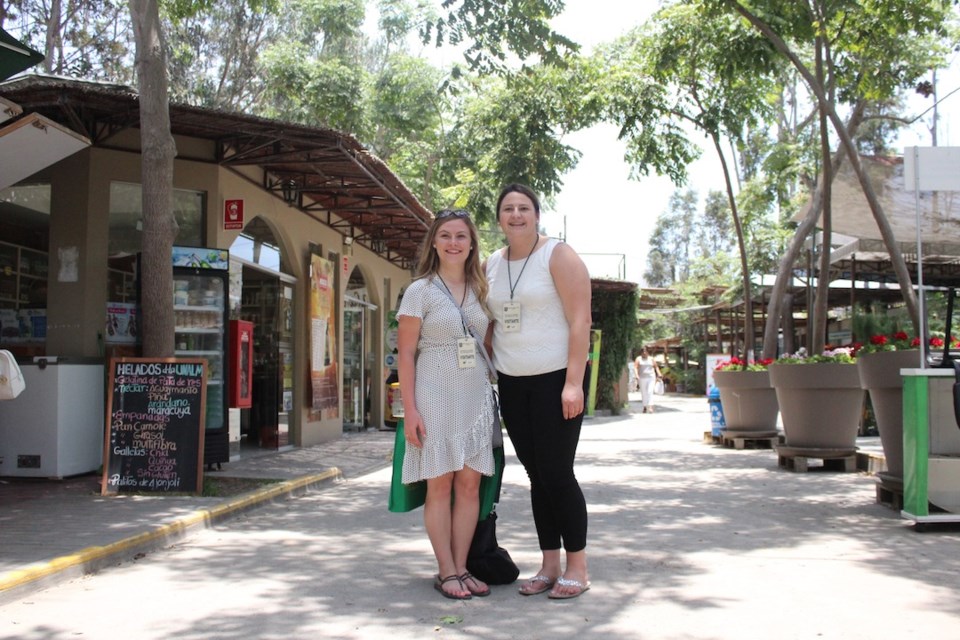Melville’s Shaelyn Stadnyk was among a recent youth delegation from Canada to visit Peru.
The trade and development mission took place in Lima, Peru from, Feb. 13-22, with the Canadian team consisting of 10 youth from across Canada.
“Global Vision is an organization that builds future leaders of Canada,” explained Stadnyk. “I had become involved with Global Vision in high school through my teacher, Chelsey Kirschman. My experience has ranged from three Round Tables in Calgary and Vancouver, a National Youth Ambassador Caucus in Ottawa, and an Arctic Youth Ambassador Summit in Nunavut, Iqaluit.”
The trip to Peru gave Stadnyk a more international view of trade, in particular in terms of agriculture.
“I felt like the Junior Team Canada Trade and Development Mission to Peru was a good opportunity to broaden my horizons about agriculture and build my future career,” she said. “It’s a once in a lifetime opportunity to be able to meet with individuals within the agriculture sector internationally. Having completed three years of my degree I felt like I had a deeper understanding of Canadian agriculture and the knowledge that would benefit me to make meaningful connections. It allowed me to ask the right questions that could benefit the industry back in Canada.”
Agriculture is certainly in Stadnyk’s background having grown up south of Melville on the family’s cattle operation.
“I went to school in Melville graduating in 2016, then moved to Saskatoon to pursue a degree in Agribusiness,” she said. “From there during the summers I have worked within the ag industry at IHARF and Bayer around Indian Head to continue developing my knowledge and love for agriculture.”
Currently Stadnyk is in her third year of an Agribusiness degree through the College of Agriculture and Bioresources at the University of Saskatchewan. Where that will take her is still to be determined.
“I am not sure that once I graduate I myself would like to farm, but I absolutely would like to stick with working within the agriculture business sector,” she said. “It’s what I’ve grown up around and I’m proud to be a part of it. It’s a great career to be jumping into as there’s a fountain of opportunities available. It’s a rapidly growing and developing sector with so many different routes that you can branch off into and explore.
“I know that my future career in agriculture will be nothing short of exciting and that I will be doing something that I truly enjoy, no matter what that might be.”
As for the trip to Peru, Stadnyk said it was generally an interesting learning experience.
“One of the most memorable aspects of the mission was the Peruvian culture that we were able to experience,” she said. “It is so similar and different from our own culture in Canada. We had local volunteers that were helping us with getting around and translating throughout our time in Peru. Their hospitality and generosity spending 10-days with us made a world of a difference when it came to how smoothly everything had gone. They never hesitated to help in any way and answer any questions we had. They made sure we made the most out of our time in Peru and got the full experience learning about their culture and daily way of life.”
As for agriculture, Stadnyk said that is one of the commonalties between Canada and Peru.
“Much like in Canada, agriculture is one of Peru’s leading industries,” she said. “In Peru, agriculture is there second largest economic driver. We had the chance to visit the Canadian Embassy in Peru and talk with the agriculture trade commissioner and found that the agriculture industry is seeing a five per cent growth each year.
“In Canada right now we are seeing the number of farms decreasing, but the size of farms is increasing.
In Peru this is very opposite as 60 per cent of farmers are small scale farms that are providing these outputs.
“As well in Canada we are used to farming practices С����Ƶ relatively similar from coast to coast. This wasn’t the case in Peru where there are three very diverse areas that are farmed – the desert, mountains, and amazon jungle.”
Learning about agriculture in Peru is also approached a bit differently.
“It was interesting to see how different their education system was different from ours relating to agriculture,” said Stadnyk. “In Lima there is a whole university dedicated to agriculture. Students are given the opportunity to learn hands on in fields, lectures, doing research, and in labs. Their main goals are to provide their students with the tools to increase food security, increase local income, stability, and competitiveness of their agricultural systems. The goal of the program is to identify and resolve economic and environmental problems to benefit families that are pursuing farming. Many of these students are going back to family farms.”
So did Stadnyk see opportunities in terms of agriculture between the two countries?
“Coming to Peru with an agriculture background and having the opportunity to visit their school, I think the University of Saskatchewan and Lima’s agriculture university have a great opportunity to collaborate together on the student level, she offered. “Lima’s agricultural university provides the opportunity for students from across the world to travel to their university over the summer for a few weeks to explore their university and learn from professors and students. Incoming students have the opportunity to go through every division they offer including spending time in fields and labs. It’s a great opportunity for students to broaden their own knowledge about agriculture.”




